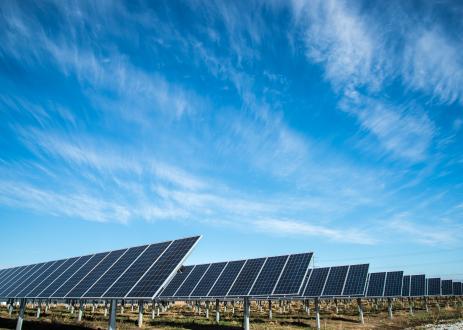How Michigan Can Meet Its Clean Power Plan Targets

概要
该事实说明表探讨了密歇根州如何使用其现有政策和基础设施在清洁能源计划下符合其排放标准,同时最大程度地降低合规成本,确保可靠性和利用经济机会。在WRI的情况表系列中阅读有关其他分析的信息,各州如何实现其清洁能力计划目标.
Key Findings
密歇根州符合其CPP标准的位置很好 - 它可以通过其现有的清洁能源政策获得其基于质量排放目标所需的减少的98%。密歇根州可以通过更好地利用现有基础设施来弥补剩余的差距,甚至超过其目标:
- 活力efficiency resource standard:要求从2012年前一年的销售额占1%的年度电力节省。
- 可再生能源标准:Requires 10 percent of sales to come from renewable sources by 2015, and the same amount of credits to be maintained going forward.
- 增加现有天然气电厂的使用。Combined cycle plants generated less than one-fourth of the electricity they were capable of producing in 2012. Running existing plants at 75 percent could cut emissions further.
- 提高燃煤电厂效率。Low- and no-cost operational improvements and best practices at existing coal plants could cut emissions further.
Michigan has the opportunity to go even further by expanding its successful clean energy policies. Michigan could nearly double its required reductions by increasing the renewable standard to 20 percent of sales by 2022 and the efficiency standard to 2 percent of sales beginning in 2019, as well as implementing the infrastructure opportunities above.
Michigan can develop an implementation plan that maximizes the economic benefits to the state and achieves emission reductions cost-effectively by:
- Adopting a market-based carbon pricing program,这鼓励了削减成本效益的排放并产生可用于公共投资或减少税收的收入.The CPP encourages states to trade credits without formally joining a trading program. Assuming a $10 per short ton price of interstate emissions allowances, Michigan could generate an average of over $160 million per year in revenue between 2022 and 2030 from out-of-state sources if it surpasses its CPP target by expanding its clean energy policies and using infrastructure opportunities as described above.
- Investing in energy efficiency.效率是密歇根州最具成本效益的工具之一,可以减少其排放,同时为居民节省资金。在该州目前的效率计划上投资的每一美元都向电力客户赚取了估计的4至5美元的储蓄。
Michigan is in a strong position to comply with the Clean Power Plan while taking advantage of economic opportunities and maintaining grid reliability. Michigan’s clean energy policies are already cutting CO2排放和其他有害空气污染,同时为该州的居民节省资金。密歇根州可以通过继续执行这些政策并更好地利用现有基础架构来符合其质量标准。如最近提出的那样,废除或削弱了这些政策,可能会使符合标准更加困难和昂贵。但是,通过扩大这些政策,密歇根州可以扩大其收益,并更具成本效益。
Executive Summary
On August 3, 2015, EPA finalized standards for existing power plants that will help drive additional CO2 emission reductions by 2030. EPA developed these state-specific standards by taking into account each state’s existing fossil fleet along with an estimate of the potential to increase the existing coal fleet’s efficiency, ramping down coal generation by increasing the utilization of the existing natural gas combined cycle fleet, and developing more renewable energy resources. The Clean Power Plan enables states to use a wide range of options to meet their standards, such as existing clean energy policies and electricity infrastructure (the focus of this analysis), other tools to cut electricity use and increase the use of renewables, and broader initiatives such as participation in a cap-and-trade program or use of a carbon tax.
Projects
-

美国气候必威官网是真的吗
访问项目Advancing climate action on federal, state and local levels to ensure a sustainable, prosperous and just future for all Americans.
Part of 必威官网是真的吗

